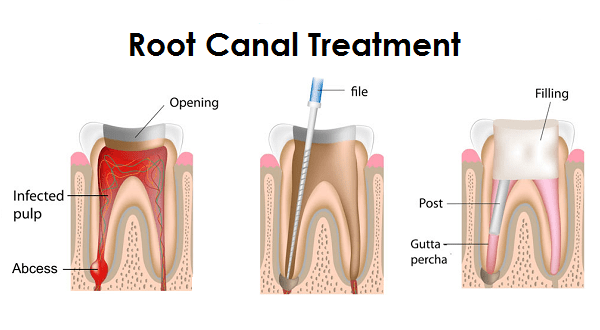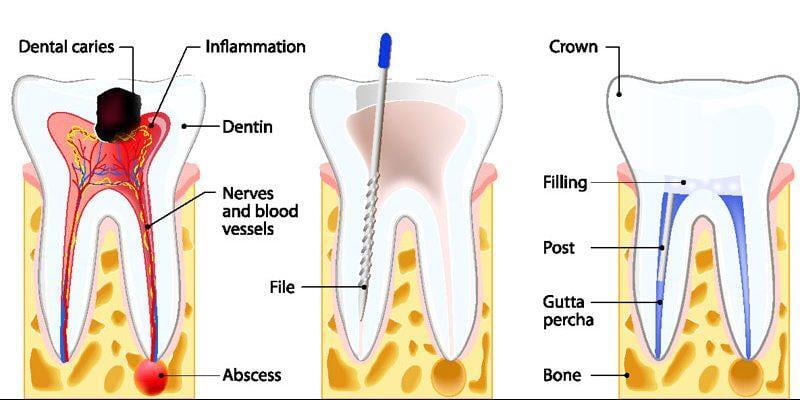Root Canal Treatment

Root canal therapy, also known as endodontic therapy, is a dental treatment for removing infection from inside a tooth. It can also protect the tooth from future infections.
A "root canal" is not a treatment, but part of a tooth. It is the hollow section of a tooth that contains the nerve tissue, blood vessels, and other cells, also known as the pulp.
A tooth consists of a crown and roots. The crown is mainly above the gum, while the roots are below it. The roots attach the tooth to the jawbone.
Inside the crown and the root, or the root canal, is the pulp. The pulp nourishes the tooth and provides moisture to the surrounding material. The nerves in the pulp sense hot and cold temperatures as pain.
The name of the dental procedure commonly referred to as a "root canal" is actually endodontic therapy, which means "inside the tooth."
However, the term "root canal" has come to be commonly used to talk about the procedure.

What are the steps?
Root canal therapy is done in three steps, and it takes between one and three sessions to complete.
1. Cleaning the root canal
First, the dentist removes everything that is inside the root canal.
With the patient under local anesthesia, the dentist makes a small access hole on the surface of the tooth and removes the diseased and dead pulp tissue with very small files.
2. Filling the root canal
Next, the dentist cleans, shapes and decontaminates the hollow area, using tiny files and irrigation solutions. Then, the tooth is filled with a rubber-like material, using an adhesive cement to seal the canals completely.
After root canal therapy, the tooth is dead. The patient will no longer feel any pain in that tooth because the nerve tissue has been removed, and the infection has been eliminated.
3. Adding a crown or filling
However, the tooth will be now more fragile than it was before. A tooth with no pulp must receive its nourishment from the ligament that attaches the tooth to the bone. This supply is adequate, but in time, the tooth will become more brittle, so a crown or filling offers protection.
Until the crown or filling is complete, the patient should not chew or bite on the tooth. Once there is a crown or filling is done, the person can use the tooth as before.
Treatment often takes only one appointment, but if there are curved canals, multi-canals, or large infections, this could take one or two additional appointments.
Credits- medicalnewstoday.com
